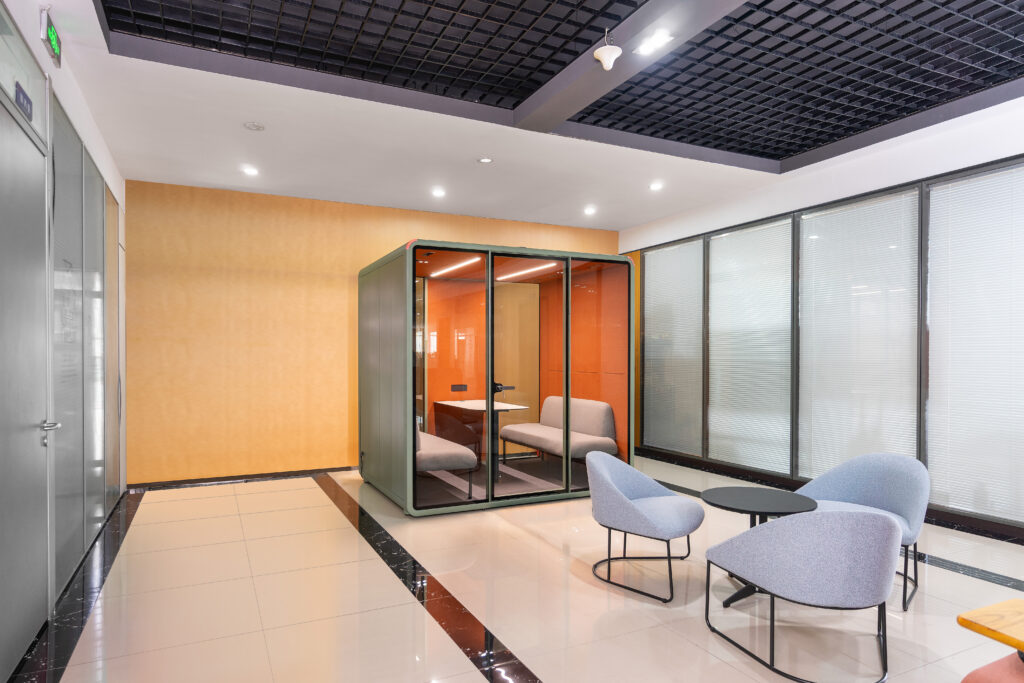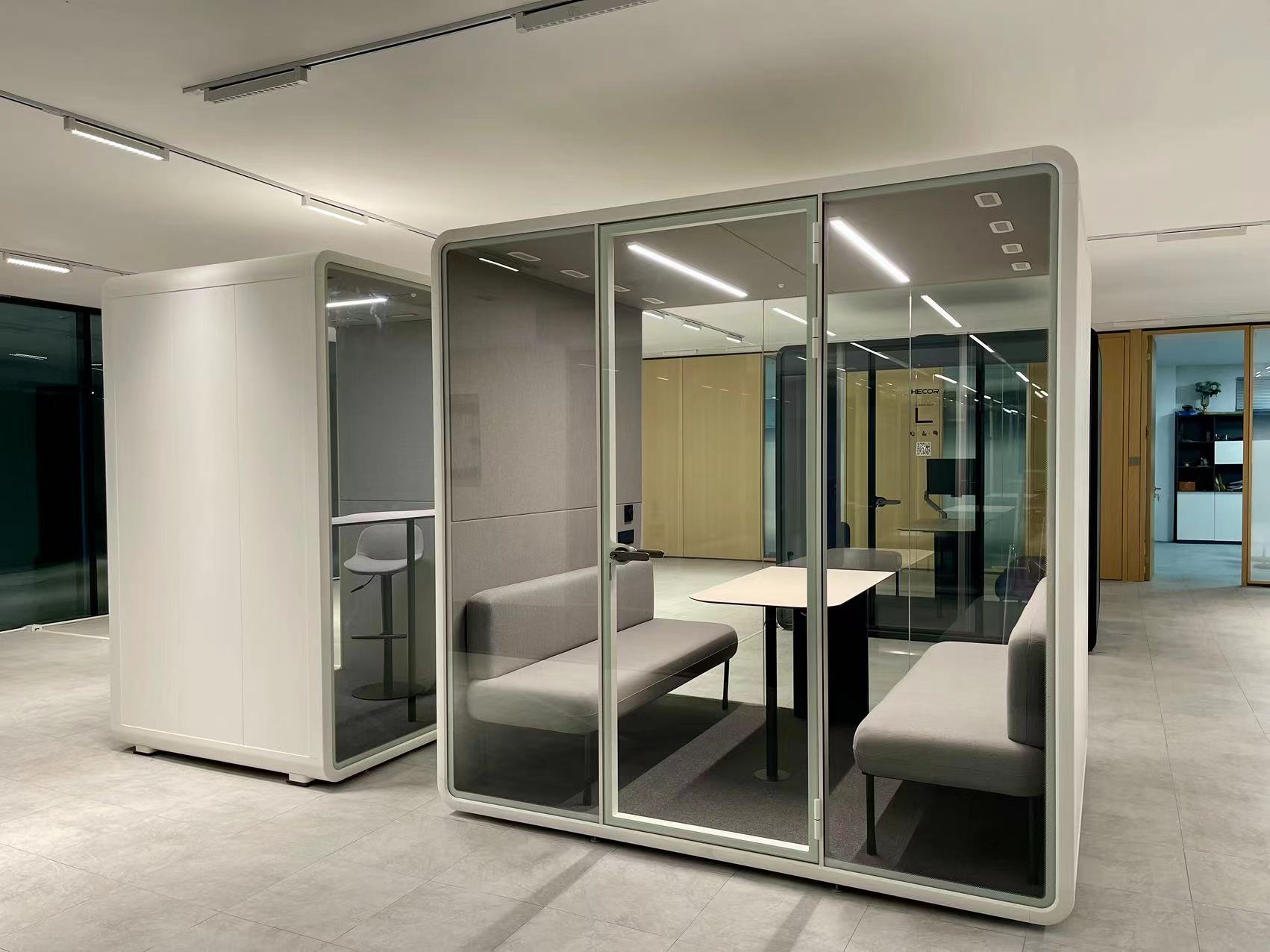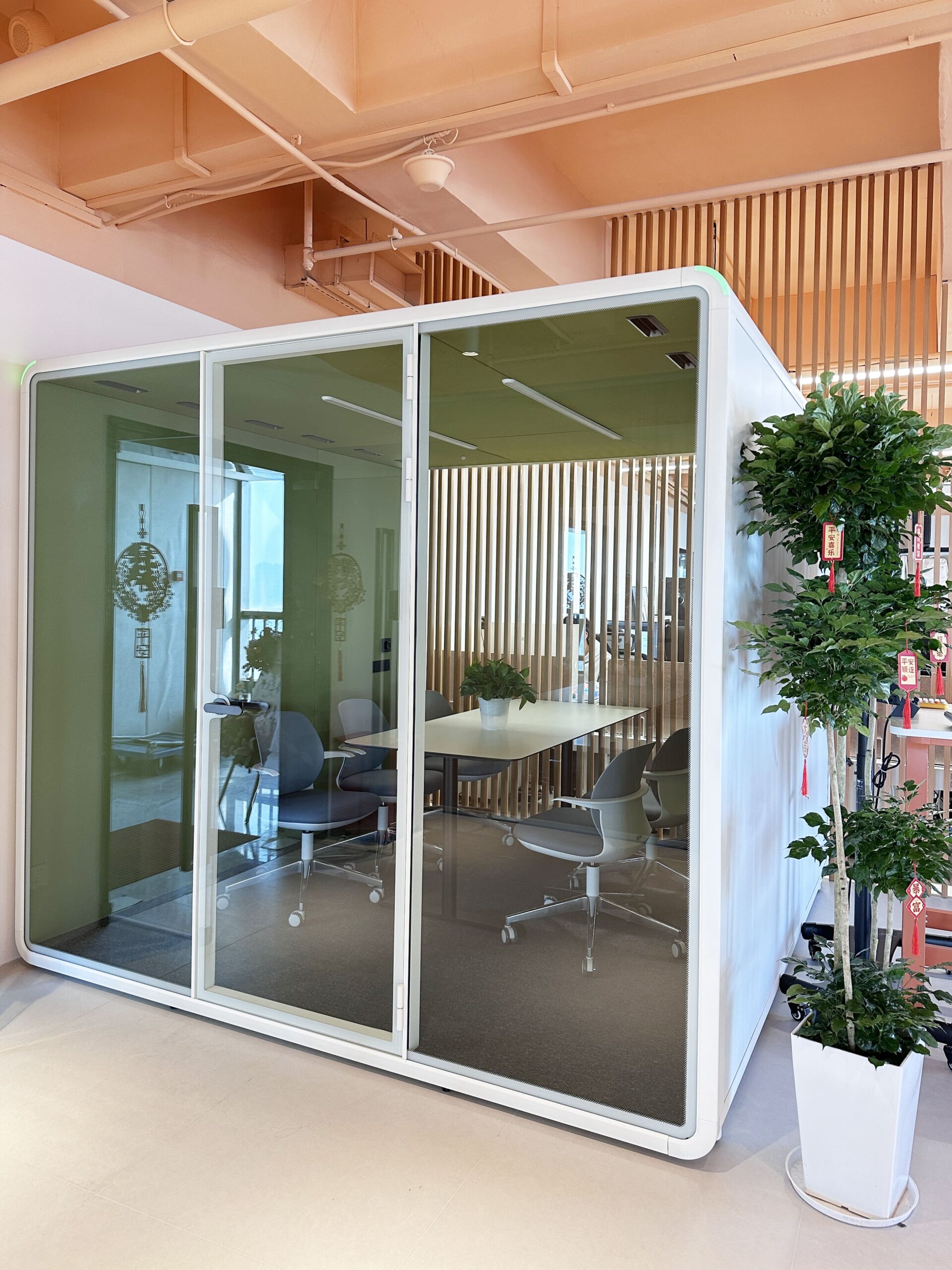The sound insulation technology principle of the working pod (assumed to be a specific closed or semi-closed structure, used in sound insulation scenarios) mainly relies on energy conversion, damping dissipation and structural optimization design in acoustics. It reduces sound wave transmission through the synergistic effect of multiple layers of materials. Specifically, it can be divided into the following core mechanisms:

1. Absorption and conversion of sound wave energy
Porous material sound absorption: The interior of the pods may be made of fibrous, granular or porous materials (such as sound-absorbing cotton, glass fiber, etc.). When sound waves enter the micro-pores of these materials, air molecules rub against the pore walls to generate viscous resistance, converting sound energy into heat energy and thereby reducing the intensity of the sound waves.
Damping layer energy dissipation: Elastic damping materials (such as rubber, high molecular polymers) are added between structural layers. When sound waves cause structural vibration, the damping layer converts mechanical energy into thermal energy through intermolecular friction, further weakening the vibration energy.
2. Sound wave reflection and blocking
High-density material sound insulation: The outer layer or structural layer of the pod may use high-density materials (such as steel plates, concrete, etc.), taking advantage of the material’s compactness to directly reflect sound waves and reduce penetrating sound energy. According to the law of mass, the greater the mass per unit area of a material, the more significant the sound insulation effect.
Multi-layer composite structure: By combining multiple layers of materials of different densities and thicknesses (such as the “mass layer – damping layer – air layer” structure), it utilizes the reflection, absorption and phase interference effects of each layer on sound waves to achieve wideband sound insulation. For example, the air layer can form an acoustic resonance cavity, further consuming acoustic energy.
3. Structural Optimization and vibration control
Vibration reduction design: Elastic connections (such as shock-absorbing pads, springs) may be adopted between the pods and the supporting structure to reduce the transmission of solid sound. For instance, by reducing the resonant frequency of the structure and avoiding coupling with the frequency of external noise sources, the transmission of vibration can be decreased.
Sealing design: Sealing strips, elastic rubber and other materials may be used at the seams and openings of the pods to prevent sound waves from leaking through the gaps. Sealing performance is particularly crucial for the isolation of high-frequency noise.
4. Acoustic resonance and interference effects
Helmholtz resonator: Inside the pod, there may be cavities or channels of specific sizes designed to absorb sound waves of specific frequencies by utilizing the Helmholtz resonance principle. For instance, by adjusting the cavity volume and the neck size, low-frequency noise can be specifically weakened.
Multi-layer interference: The reflection of sound waves between multiple layers of materials may produce phase differences, resulting in interference cancellation and further reducing the transmitted sound energy.
5. Sound bridge blocking
Independent structural support: The support structure of the pod may be isolated from the external building structure to prevent sound waves from being transmitted through solid connections. For example, floating floors or independent supports are adopted to cut off the path of the “sound bridge”.
Summary of Technical Principles
The sound insulation technology of the working pod achieves the attenuation of sound wave energy and the blocking of the transmission path through the synergistic effect of multiple mechanisms such as sound absorption, sound insulation, vibration reduction and sealing. The core lies in:
Material selection: Porous materials absorb sound, high-density materials insulate sound, and damping materials consume energy.
Structural design: Multi-layer composite structure, elastic connection, sealing treatment.
Acoustic optimization: resonant cavity design, interference cancellation, sound bridge blocking.
These principles work together to significantly reduce the noise transmission between the inside and outside of the pods, making them suitable for scenarios that require a quiet environment (such as sound insulation for industrial equipment, laboratories, recording studios, etc.).



